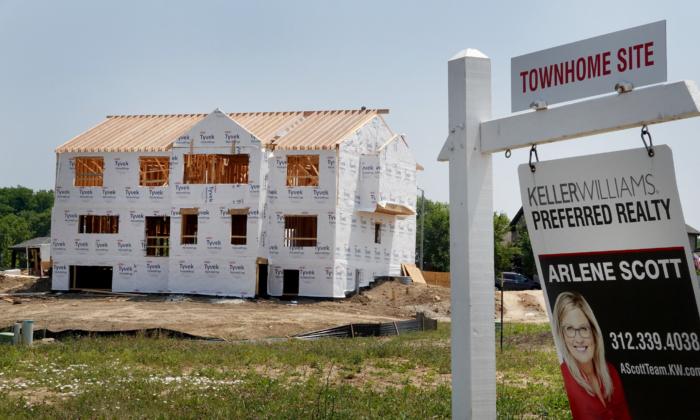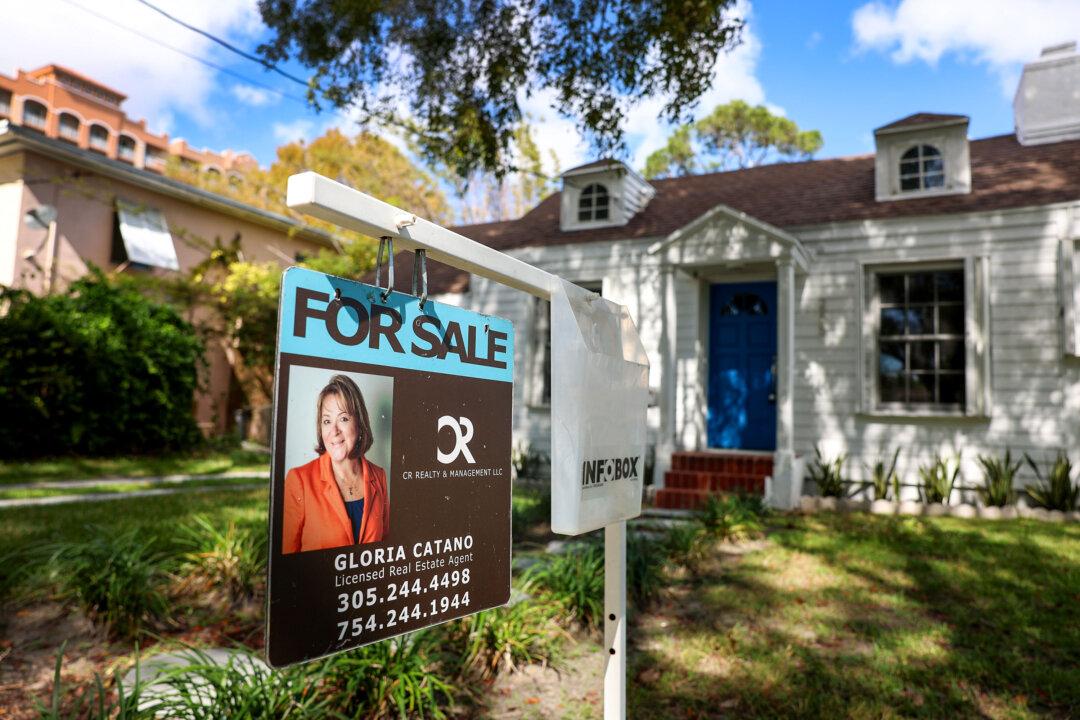A new report from Realtor.com indicates that August home prices rose by 0.7 percent, upsetting the previous two months of year-over-year declines.
Contributing to this hike may be the 7.9 percent drop in inventory compared with last year and a 48 percent plunge in inventory levels from 2017 to 2019. The report also indicates that home sellers were less active last month, with 7.5 percent fewer listed homes than in the same period in 2022.
“Inventory remains persistently low, even with record-high mortgage rates putting a damper on demand,” said Danielle Hale, chief economist for Realtor.com. “The inventory crunch continues to put upward pressure on home prices, amplifying affordability concerns and shutting some potential buyers out of the market.”
Rocket Mortgage reported that current interest rates are hovering between 7 and 7.5 percent.
Dottie Herman, vice chair of Douglas Elliman, told The Epoch Times that lack of adequate inventory is one of the major reasons for the rise in home prices.
“There’s not much out there. And when you have more buyers than sellers, the prices are going to remain high,” she said. “We’re still seeing bidding wars, although not to the extent of those during the pandemic when we had 20 or more offers.”
Ms. Herman, based in New York City, also indicated that higher mortgage rates are keeping many homeowners in their present locations.
“A lot of people refinanced to get those 3 percent rates two years ago, so now even if they’d like to sell and move elsewhere, they’re not going to put their homes on the market and give up those low rates,” she said.
In her experience, the autumn market doesn’t usually pick up until late September or early October. “It doesn’t matter whether people live in New York, Florida, or out West, because kids are going back to school or college, and parents are focused on that,” she said.
The Realtor.com report also shows that California still commands some of the country’s highest-priced homes, with the San Jose-Sunnyvale-Santa Clara area topping the median sales prices at $1.474 million. The San Diego-Chula Vista-Carlsbad region is a close second with a $1.099 million median sales price, followed by San Francisco-Oakland-Berkeley at $1.049 million. The New York-Newark-Jersey City area is significantly lower, with a median home sales price of $717,000.
Scott Segall, an agent in Douglas Elliman’s office in Beverly Hills, California, told The Epoch Times he hasn’t seen any downturn among the nation’s top-priced homes. “There seems to be a disconnect between the interest rates and the home prices,” he said. “There are fewer homes to choose from, and a lot of people don’t want to do the work required for those houses needing major renovations.”
Mr. Segall acknowledged the skyrocketing costs of homes in and around Los Angeles. “Today, $1 million will get you just a small house on a mediocre street,” he said. “For about the same amount, you can get a one-bedroom condo that may need some work.”
Current homeowners there face the same problems as those throughout the nation when it comes to the idea of selling. “If they’re going to sell and look for something from $3 to $5 million, they’ll end up spending 3 times as much with the new interest rates,” he added. “We’re all hoping the rates will come down and create a new surge in the market. They can’t go much higher because that will just kill all the transactions.”
Even some first-time homebuyers in the Los Angeles area are now resorting to cash deals to win those coveted properties of “move-in” condition. “There are young people in the technology or entertainment industries who have money, and there are others who have wealthy parents,” he said.
But for the rest of the country, first-time homebuyers are facing the biggest challenge. “The larger down payments due to increased prices, combined with escalating mortgage interest rates, is knocking a lot of them out of the market,” Ms. Herman said.
For Generation Z—those born between 1997 and 2012—the prospect of buying a home may seem exceptionally bleak. Limited savings and hefty student loans have left many in their mid-20s wondering whether they’ll ever own a home.
Michael Sarracini, co-founder of Keyspire, which offers real estate investment education, knows all too well what they’re experiencing. “When I started out in 2000, I was in my early 20s and was a broke college student,” he told The Epoch Times. “But I did have an insight that I wasn’t going to have the wealth I wanted without developing a strategy to purchase and own real estate.”
Like many others in his generation, Mr. Sarracini was taught to get a job after college, save up money, and then try to purchase a home. “The problem is that model worked well years ago, but with today’s home prices continuing upward and a tripling of interest rates from just a few years ago, that’s just not going to work anymore,” he said.
According to Mr. Sarracini, waiting for home prices or interest rates to fall also isn’t a good strategy. Instead, he bucked the old system by partnering with someone who had the finances for a down payment and searched for two-family housing.
“I looked for something with a separate entrance or a finished basement that was zoned correctly,” he added. “That rental income now makes monthly mortgage payments affordable.”
A Canadian resident, Mr. Sarracini focused on college towns where students were actively looking for rental housing. He used a business partner but suggests that young potential homeowners seek help from parents or relatives for the down payment. In the United States, a number of government loans are also available for first-time homeowners who qualify.
“Of course, I also worked hard and even sold some personal items on eBay to put toward the down payment,” he said.
Years ago, he purchased his first home near Toronto for $161,000. He worked on all the renovations himself and was able to rent out five bedrooms to eager college students in the area. Since that time, he has continued to buy, renovate, and rent properties, creating a steady stream of income.
To date, Mr. Sarracini has helped thousands of people across the United States and Canada to not only purchase homes, but also replace their full-time jobs with passive income from property investments.
The only silver lining to the current housing situation is that there are affordable homes scattered throughout the country that potential buyers can find if they look in the right places.
Reatlor.com indicates that some of the country’s lowest-priced homes can be found in Ohio’s Cleveland-Elyria region, with median sales prices of just $250,000. Pittsburgh, Pennsylvania, and Rochester, New York, also offer homes for the same amount, while the Detroit-Warren-Dearborn, Michigan, area is slightly higher with median prices at $272,000.
Ms. Herman predicts the real estate market is going to be tight through the beginning of 2024.
“We’re hoping to see mortgage rates stabilize or even come down a bit by next spring,” she said. “If we start to see rates ranging from 5.5 to 6 percent, then I think you’ll see more properties coming on the market again, and possibly some price drops.”







